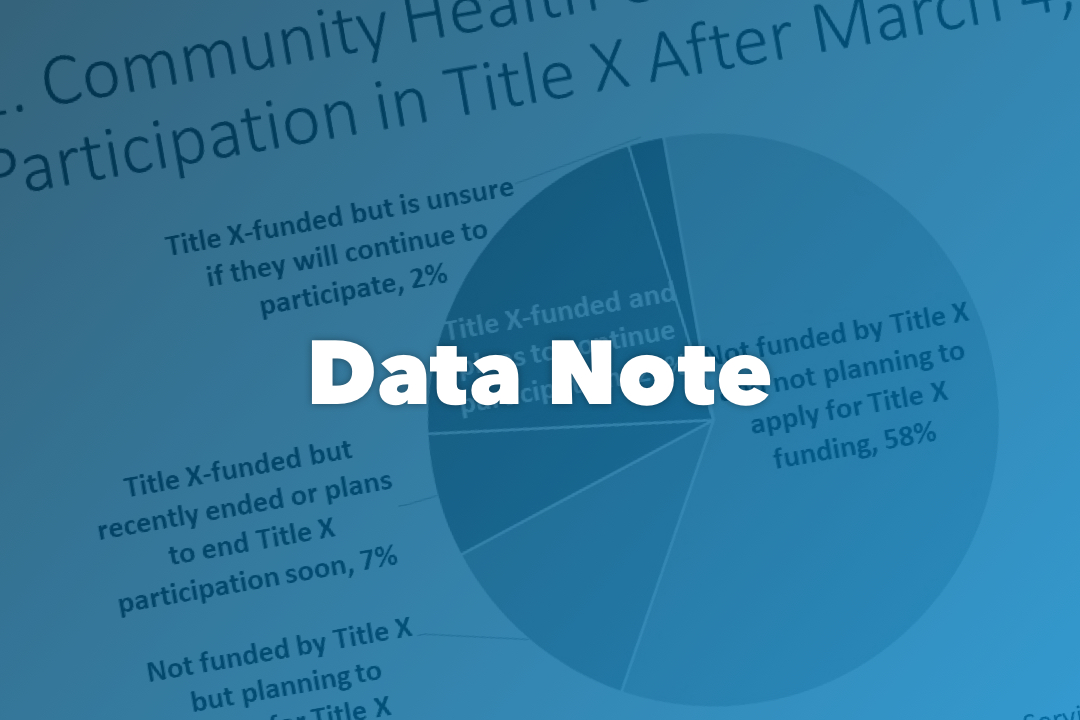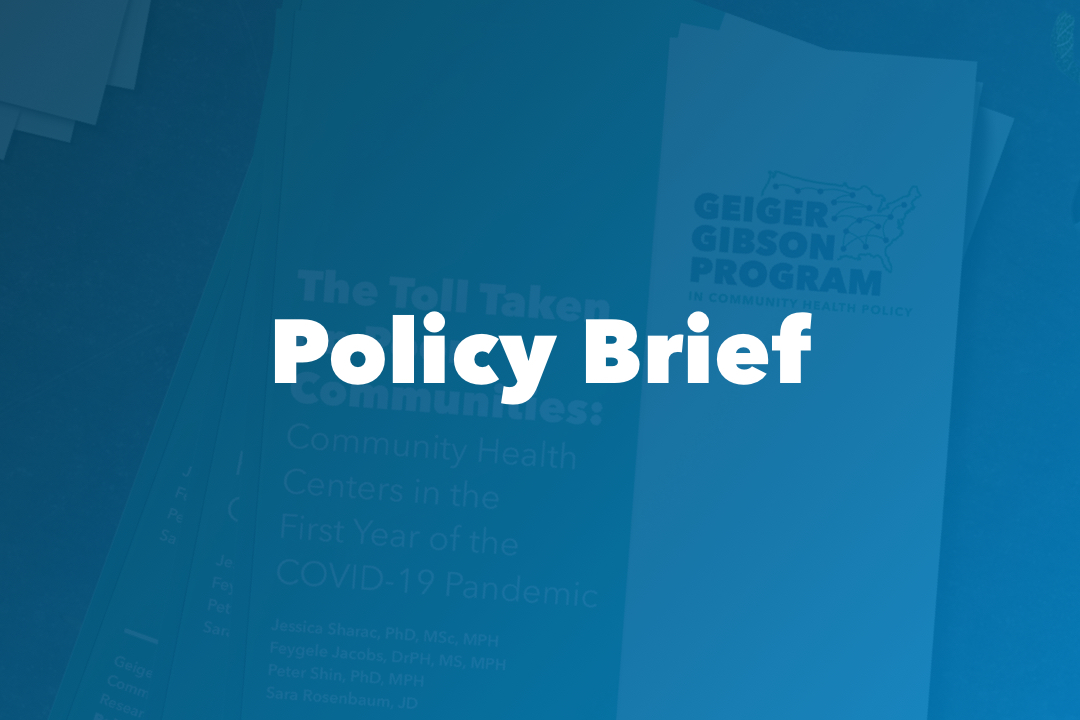Data Note
September 2023
Rebecca Morris, Peter Shin, Feygele Jacobs, Sara Rosenbaum, MaryBeth Musumeci
Braidwood Management v Becerra, now pending in the United States Court of Appeals for the Fifth Circuit, involves one of the most important aspects of the Affordable Care Act – its guarantee of free coverage of preventive health benefits, which offers protections to over 150 million privately insured people as well as millions of Medicaid beneficiaries eligible as a result of the ACA Medicaid expansion.1 The plaintiffs, a small group of individuals and employers, challenge the guarantee on constitutional grounds, arguing that all coverage requirements added after March 2010 are unconstitutional and cannot be enforced. At risk, should this argument prevail, are three quarters of all benefits now covered for women, infants and children2 as well as more than a dozen benefits for older adults, added as a coverage requirement since enactment. Examples of the benefits at risk are PrEP, which prevents transmission of HIV, all FDA approved contraceptives, childhood and adult immunizations recommended by public health experts over the past dozen years, breast cancer risk prevention treatments, statins to prevent the risk of stroke, preeclampsia and maternal depression screening, and childhood depression screening.
In thousands of rural and urban communities, community health centers (CHCs) are the major source of preventive health care, and CHCs serve millions of patients who are insured through marketplace plans, employer coverage, and Medicaid expansion plans. Of course, even if mandatory preventive coverage were to end, employers, insurers and state Medicaid agencies could voluntarily continue coverage, but in the case of private insurance, experts in insurance economics assume that insurers and plans will be unlikely to do so, fearful of adverse selection by people who choose plans offering coverage because they suspect that they may have more serious health problems.3 Because preventive care goes to the heart of their mission, CHCs would continue to offer preventive services. But the overwhelmingly low-income patients who rely on health centers might forgo care out of cost concerns. Furthermore, CHCs would lose the ability to bill for scores of covered preventive services, some of which are relatively costly, thereby incurring considerable financial losses that would need to be borne by grants and modest patient cost- sharing.
Community Health Centers’ Role in Preventive Care Guaranteed under the ACA
The ACA guarantee includes hundreds of screening procedures recommended by four expert advisory committees whose recommendations span women’s health, child health (both overseen by the Health Resources and Services Administration), immunizations (the Advisory Committee on Immunization Practice (ACIP)), and a broad range of preventive procedures for children and adults with an A or B rating (the United States Preventive Services Task Force (USPSTF)). All of these recommendations can be found online. 4
Many preventive services furnished by community health centers are captured in the Uniform Data System (UDS), to which all community health centers report annually. While the UDS does not reflect all ACA covered preventive procedures, it provides insight into health centers’ role in the ACA free preventive care guarantee. Table 1 provides a crosswalk between the ACA benefit guarantee and the preventive procedures captured in the UDS. This crosswalk shows the millions of patients whose health care benefits from the free preventive coverage guarantee.
In 2022, when over 30.5 million patients received care at CHCs, nearly 11 million (over one-third) were screened for childhood, adult, or postpartum depression, and nearly 10 million received preventive care for obesity. Seven million patients - nearly one quarter of all CHC patients - were tested for HIV. One in 6 patients screened for hypertension received a diagnosis. Nearly 3 million patients received a diabetes diagnosis following screening, and more than 2.7 million were prescribed statins or were screened for colorectal cancer. Over 2 million adolescents and adults were tested for Hepatitis C, and more than a million were tested for Hepatitis B. Nearly 1.7 million patients received a breast cancer screening and nearly 1.6 million patients received contraceptive management. Sexually transmitted infection (STI) screenings uncovered over 300, 000 patients diagnosed with an STI. Especially important, more than 84,000 patients received PrEP care and management.
Table 2 provides state-level detail on the number of health center patients who received preventive care for those services identified as both an element of the ACA free preventive benefit guarantee and a community health center care measure in 2022.
Community health centers play an essential role in preventive care, and in the context of the ACA, they are crucial to patient access to the law’s free preventive benefit guarantee. This analysis shows the size of the CHC population that benefits from prevention and the extent to which the preventive services made available at CHCs are reflected in the ACA preventive benefit guarantee. Should Braidwood Management lead to the loss of free preventive coverage, millions of patients stand to lose high-value coverage, and health centers likely will find themselves without a significant source of the revenue they need to maintain a strong preventive care presence in their communities.
- 1ASPE (2022). Access to Preventive Services without Cost-Sharing: Evidence from the Affordable Care Act https://aspe.hhs.gov/sites/default/files/documents/786fa55a84e7e3833961933124d70dd2/preventive-services-ib-2022.pdf
- 2Murphy, C., Morris, R., Johnson, E. & Rosenbaum, S. (2023). Braidwood Management v Becerra Could Eliminate Three Quarters of the Affordable Care Act’s Preventive Benefits for Women, Infants, and Children. https://geigergibson.publichealth.gwu.edu/71-braidwood-management-v-becerra-could-eliminate-three-quarters-affordable-care-acts-preventive
- 3O’Neill Institute (2023). Braidwood Management, Inc. et al. v. Xavier Becerra et al. https://litigationtracker.law.georgetown.edu/litigation/braidwood-management-inc-et-al-v-xavier-becerra-et-al-2/
- 4CDC, ACIP Vaccine Recommendations and Guidelines. https://www.cdc.gov/vaccines/hcp/acip-recs/index.html; HRSA, Women’s Preventive Services Guidelines. https://www.hrsa.gov/womens-guidelines; Bright Futures/American Academy of Pediatrics, Recommendations for Preventive Pediatric Health Care. https://downloads.aap.org/AAP/PDF/periodicity_schedule.pdf; and USPSTF, A & B Recommendations. https://www.uspreventiveservicestaskforce.org/uspstf/recommendation-topics/uspstf-a-and-b-recommendations




